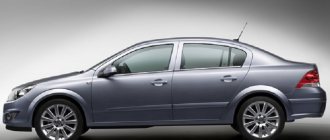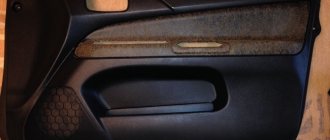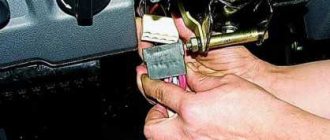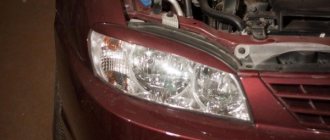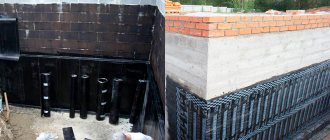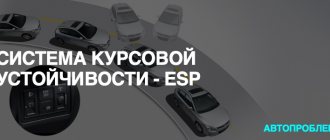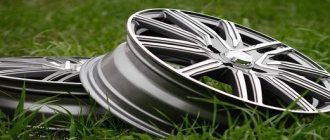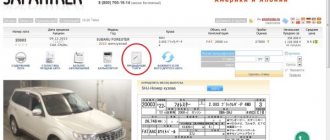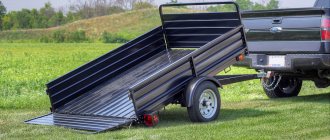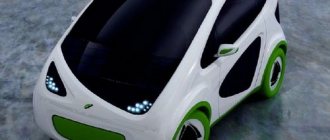Let us continue to examine in detail the device and design of the car. Let's dwell on what the frame, body and chassis of a vehicle are. Let's focus on their main purpose.
- The frame
is a supporting structure. This is the basis for other parts of the vehicle. Its frame. The engine, suspension, transmission units (mechanisms used to transmit motion) and other components of the car are attached to the frame. Initially, all cars had a frame. Now - only for those without a supporting body. These are trucks, most SUVs. Frames can be spinal (load-bearing parts - pipes) or consisting of spars (they are made from channels - metal products that form the letter “P” in cross section). Backbone frames are more rigid, and the torsional rigidity of the frame is especially impressive. Based on the backbone frame, it is easy to create a car with a different number of drive axles. But modern manufacturers use spar frames more often. After all, when using a backbone frame, the mechanisms have to be installed inside it, and if the machine breaks down, repairs are very difficult. - The body
is the frame of the car. It is a constructive part. It can be attached directly to the frame or represent an independent supporting system (for models where the frame is not installed - mainly passenger cars). Made from metal (e.g. sheet steel, aluminum), carbon fiber, plastic, fiberglass. Designed to accommodate the driver, passengers and cargo. The body includes a number of components: hood, fenders, running boards. The number and types of components depend on which vehicle the body belongs to. For example, in a commercial (truck) vehicle, the body can be represented by the “formula” cab + platform/tank/van + fenders, hood, steps, while the body of a passenger vehicle is more often represented by the base, roof, side, front and rear panels (side, front and back). To protect against corrosion and give an aesthetic appearance, the car body is painted. - Chassis
is a set of chassis components, control mechanisms and transmission. Thus, behind the chassis there are all the units and components that are needed to control the movement of the vehicle. It is the units and chassis components that provide the vehicle with the transmission of driving force. Such qualities as, for example, maneuverability and load-carrying capacity of the vehicle depend on the chassis.
Body and frame chassis
If we are talking about a chassis on a frame, this is a complete structure that can be moved on its own wheels or tracks. Frame chassis are installed on trucks and tractors. At the same time, means of increasing cross-country ability can be installed on the chassis of vehicles intended for movement in off-road conditions.
If we are talking about the chassis of a vehicle with a monocoque body, then we are dealing with the base of the vehicle. It is this that is the connecting link between the chassis units and control mechanisms.
One of the popular design options is the full-frame “body over frame” system. This is a rigid structure made of steel rods. Bolts are used for fastening. This design is especially suitable for jeeps and minibuses.
A chassis with a monocoque body (the connection is made by welding) can more often be found in small and medium-sized passenger cars. Many body structures of this type are called unified, block.
Compared to a frame structure, the body structure has significantly less weight. Thanks to this, body vehicles have better fuel efficiency.
The figure clearly demonstrates that body vehicles do not have a separate frame. The supporting body of the vehicle is formed by panels.
A – Body structure with removable chassis.
B – Chassis components. Typical layout for Mazda and SAAB cars. The components are fastened to the metal parts of the body structure through reinforced transverse elements.
It is also important to be familiar with the concept of “self-propelled chassis”. In this case, we are not talking about a component, but an independent motorized vehicle. Additional equipment, tools, devices (welding machine, mounted combine harvester, snowblower, loader, hoist, truck crane) are installed on the self-propelled chassis. The self-propelled chassis is actively used in public utilities, agriculture and forestry, as well as in warehouses.
Car frame
The car frame is the supporting system of the car, which is a “skeleton” onto which the body, engine, transmission units, and suspension are attached. The resulting structure is called a chassis. In most cases, the frame chassis can even be moved on the road separately from the car body. The history of the frame chassis goes back to the very beginning of the development of the automotive industry. The separate frame was a completely automotive solution for the load-bearing system. Car designers borrowed this idea from railway transport. The first frames were made of hard wood. In addition, the material for the frames in those years was round metal pipes.
At the beginning of the twentieth century, frames with a design made of stamped profiles with a rectangular cross-section were very popular. Closer to the 1930s, many passenger vehicle manufacturing companies abandoned the use of frames in favor of a self-supporting body. These days, frame chassis are used mainly on trucks and tractors, but many SUVs and limousines are often equipped with frame structures. The latter need to install a frame, because the load-bearing body with such a considerable length of the car turns out to be overweight.
Any automobile frame has a distinctive feature in terms of design. It consists in separating the functions of the load-bearing parts of the body and its panels, which have decorative significance. Decorative panels can also be equipped with a reinforcing frame. Such a frame can be located, for example, in the area of doorways, but in this case it does not take part in the perception of force loads that make themselves felt while the car is moving. The most common is the classification of automobile frames depending on the supporting structure used. There are spar, spinal, peripheral, fork-spinal, lattice frames, as well as load-bearing structures integrated into the body.
Spar frames
The spar frame
includes several cross members, which are sometimes called “traverses”, a pair of longitudinal spars (this is the name given to the main load-bearing element of the supporting structure, which is a complex-shaped box made of metal), brackets and fastenings designed for installing the car body on them and various units. Both cross members and side members may differ in design and shape. There are X-shaped, K-shaped, and tubular cross members. Their purpose is to give the structure the maximum possible rigidity. For the manufacture of traverses, a bent metal profile is usually used. The most characteristic feature of spars is a U-shaped section (channel) that varies in length. In the most loaded areas, the height of the channel section is increased.
The spars can be located parallel to each other or at a certain angle. In addition, the spars can be installed curved in a vertical or horizontal plane. The parallel arrangement is used primarily on commercial vehicles. The remaining schemes are well suited for SUVs - vehicles with increased cross-country ability. By installing the side members at an angle, you can achieve the maximum angle at which the car's steered wheels turn. Bends in the vertical plane are made to reduce the center of gravity. At the same time, the floor level in the car also becomes lower. Thanks to the bending of the side members in the horizontal plane, in addition to lowering the floor level, a significant increase in the level of passive safety is achieved in the event of a possible lateral collision.
To connect the parts that make up the frame, bolts and rivets are used. Welded joints are also widespread. Riveted frames are more often used in the construction of trucks, and welded frames are used in the manufacture of passenger cars and dump trucks with heavy loads. Bolts have found application in small-scale production. Almost all trucks and SUVs are equipped with spar frames. The popularity of such structures is due to the fact that the concept of “frame” most often means just a spar supporting system.
Spine frames
The development of the spinal frame was carried out by Czechoslovakia in the 20s of the last century. Many cars produced by this company were then equipped with such frame chassis. The main structural element of the spinal frame is the central transmission pipe, on which the crankcases of the power unit and such components as the clutch, gearbox, and main gear are combined.
The installation of such a frame is accompanied by the need to equip the car with an independent suspension of all wheels, which in most cases is realized by attaching a pair of swing axle axles to the sides of the ridge (each of them has one hinge). The main advantage of this scheme is the high torsional rigidity. In addition, it becomes possible to seamlessly develop various modifications of cars with different numbers of drive axles. The main disadvantage is the difficulty of repairing units that are rigidly fixed to the frame. This is the reason for the low popularity of backbone frames in the modern automotive industry.
Fork-spine frames
A kind of variation of the type of frame discussed above is the fork-spine design. Here the front and sometimes the rear parts are made in the form of forks formed by a pair of spars that serve to secure the power plant and transmission units. This frame differs from a conventional backbone frame in that the housings of the power transmission units are manufactured separately. Many experts also include here the so-called X-shaped frames, which are sometimes called a type of spar installations.
Peripheral frames
The peripheral frame is also often considered as a variation of the spar type design. In the central part of the peripheral frame, the distance between a pair of side members is made so large that after mounting the body, the side members can be found directly behind the door sills. The “Achilles heel” of such a frame is the place where the transition from the increased distance between the side members to the normal one takes place. In these places, special box-shaped reinforcements are installed, analogues of which are often found in cars with a monocoque body. The result of the use of a peripheral structure is a significant lowering of the floor of the body, which is entirely located between the side members, which ultimately reduces the overall height of the vehicle.
Lattice frames
Lattice frames are sometimes called space frames or tubular frames. Such a system is a spatial truss, for the manufacture of which relatively thin pipes are used. These pipes are made of alloy steels, which are characterized by high strength. In addition, this material must be lightweight and torsionally resistant. Tubular structures have found application in racing and sports cars, because one of the important parameters for them is minimum weight with maximum strength. The frame integrated into the body does not have any significant structural differences from the usual one, however, it is connected to the body by welding.
The main advantages of car frame structures include: simplicity, fairly low cost, the ability to unify basic vehicle models, the perception of serious loads when driving, increased comfort, and provision of better noise insulation. In addition, repairing a car with a frame after a traffic accident is much easier than repairing a car with a monocoque body. The disadvantages of frames are the increase in vehicle weight (when compared with a monocoque body), as well as worse passive safety associated with difficulties arising when creating programmed deformation zones.
| WE RECOMMEND ALSO READ: |
Share
Share
Chassis curb weight
Very often you can come across the concepts “curb weight of the chassis”, curb weight of the vehicle.” What is it?
The curb weight of a car is the total weight of the car with all operating materials (full tank of gasoline, coolant, oil). The weight of the driver and passengers is not taken into account. Their mass is taken into account when we are talking about the total mass of the vehicle.
The curb weight of each type of car is different:
- Pickups and SUVs. Weight reaches 2.5 tons.
- Full-size cars, minivans. Weight - about two tons.
- Compact cars. Curb weight – no more than 1360 kg.
- Microcars, microcars. Curb weight is about a ton.
Very often, the curb weight of a vehicle in the characteristics is indicated precisely as the curb weight of the chassis. As a rule, both “Curb chassis weight”, sometimes it indicates “Gross vehicle weight” and “Curb vehicle weight”.
Axle weight distribution
The characteristic “weight distribution along the axles” (“chassis load distribution”) is responsible for how much vehicle weight falls on the wheels of the front and rear axles.
This characteristic is directly related to the vehicle's fuel efficiency and turning ability. The ability of a vehicle to maneuver – turn at a given angle and maintain stability – depends on the distribution of weight along the axes.
The ideal option for sports cars is a weight distribution of 50/50 (equal - not the front and rear axle).
For front-wheel drive cars, the weight distribution along the axles is 70/30 (70% load on the front axle and 30% on the rear axle). This is important for optimizing traction on the drive wheels.
What types of frames are there: types of features
Depending on the design features of the frame, there can be the following types: spinal, spatial and spar. Among other things, each species in turn can be divided into subspecies. There are also combined types of frames that combine solutions from different types of frames in their design. The simplest type is considered to be a spar frame. Its design is represented by two longitudinal beams - spars. They stretch along the body and are connected by cross members. The beams are made of steel, which increases the torsion rate. In spinal frames, the main load-bearing element is the pipe. It connects the front engine with the transmission elements located inside. Essentially, the pipe acts as a single housing for the gearbox, transfer case and drive shafts. Torque from the engine to the transmission is supplied through a shaft placed in the pipe. Moreover, this shaft is not a cardan shaft, which ensures greater reliability. The most complex type of frame is considered to be a space frame. This frame is used on sports cars. It is a frame structure made of thin alloy pipes. This design has high strength and rigidity.
More information about the car frame will be discussed in this video:
Published: November 27, 2020
Dimensions of vehicles
Important characteristics of any vehicle (VV) are overall dimensions. These are length, width, height, load capacity, body volume.
In order to correctly determine the dimensions, it is important to clearly understand the terminology and be able to correctly calculate the distance.
Wheelbase is the distance from the center line of the front wheels to the center line of the rear wheels. The standard for small, compact cars is 254 mm (100 inches), for full-size cars and pickups - 381 cm.
- Track width is the distance between the lines of two wheels of the same axle. The standard track width for the front axle is 157 cm, for the rear axle -163 cm. The wider the track width, the higher the ability to successfully overcome sharp turns at high speeds (with a low track width there is a risk of the vehicle overturning).
- The width of the vehicle (vehicle) is the greatest distance between the most distant parts of the body located on the right and left of it. Measurements are taken perpendicular to the center line of the vehicle.
- Vehicle length is the distance from the most prominent point on the rear bumper to the same point on the front bumper.
- Vehicle height is the height from the road to the roof of the vehicle (its highest part).
By size, cars are divided into several groups:
Full size car.
Designed to transport 4-5 adults. Most full-size passenger cars are four-door, all-wheel drive or rear-wheel drive.
Medium sized cars.
Designed for transporting 3-4 people. Machines of this type are equipped with small engines, which results in significant fuel savings.
Compact and mini-compact cars.
Most of them are front-wheel drive. Due to their low weight and low aerodynamic drag, they have excellent fuel efficiency.
The main differences between the bracket for fixing the rear wheel hub
- Vertical.
- Horizontal.
- Adjustable.
Optimal for use, allows you to instantly reinstall wheels. The chain tension is fixed by the rear speed switches.
It has a specific design. By using a horizontal bracket, the chain is tensioned, which is an indispensable advantage for single-speed bikes without a rear gear shift system. The bracket is used in combination with. The disadvantage of the horizontal bracket model is that the axle can slip when driving, so clamps are installed to prevent the chain from falling off.
The part is produced with special holes designed to fix the rear derailleur. With this design, the switch can be moderately adjusted. The bracket is easily replaced, so the bike can be easily converted from a multi-speed to a single-speed.
Modern bike frame models include additional elements for connecting accessories and auxiliary parts.
Most designs are equipped with compartments for a flask, fasteners and special openings for, thereby improving the appearance of the bike and preventing possible breaks from chafing the cable on the frame.
Some bicycle frames are available with compartments for, this is especially common on city and touring bikes.
The frame is a type of supporting system of a vehicle; it keeps the entire contents of the car intact and prevents the entire constructor from falling apart into small parts. All the technical equipment of the car is installed on the frame, and the finished frame structure is called a frame chassis. The body itself is attached to the completed frame chassis. The frame takes up approximately 15% of the total weight of the car, that is, it is its heaviest part.
The role of the frame in the overall design of the car
Cars built using a frame structure are designed to withstand high loads. Such vehicles must be able to carry heavy loads and easily overcome difficult roads. Therefore, the strength requirements for frame production are quite high. It must be resistant to vibrations on road irregularities.
Main types of body frames
2.1 Spar frames
Such frames consist of two metal longitudinal beams running the entire length of the body. They are also called spars, which is where the frame gets its name. The spar frame looks like a ladder. The beams are connected to each other by traverses - cross members that give rigidity to such a frame.
And the frame elements themselves are connected to each other by welding or rivets. This is the most common type of car frame.
Machines with spar frames are characterized by a rather low floor, heavy weight and bulkiness. These features are the main disadvantages of such a frame. Spar frames are more often used in the construction of trucks and SUVs; in places of greater load, metal seals are used.
2.2 Spine frames
They consist of one longitudinal beam (or pipe), inside which the transmission shafts are located, and which connects the rear drive axle housing with the power unit and transmission. Cars with backbone frames have the advantage of lower weight over cars with spar frames, as well as greater torsional rigidity. But the big disadvantage of this design is the difficulty of repairing the machine, since it is necessary to disassemble it completely in order to fix even a small problem. This type of frame was used in the manufacture of cars by the Czech company Tatra.
2.3 Fork-spine frames
This is a subspecies of spinal frames, and its main feature is that both the front and rear parts are tridents, the basis of which is the central frame pipe, and two already extend from it, which are used for fastening components and assemblies. They use a conventional driveshaft, and the axle and engine housings are not integral with the central pipe.
The main disadvantage of such cars is poor handling due to the location of the engine at the rear. Nowadays, this type of frame structure is no longer used in the automotive industry.
A type of spar frames, which began to be widely used on large European passenger cars and American “dreadnoughts” in the 60s. In these frames, the side members are placed so wide at the rear that when installing the body they are located at the thresholds, which made it possible to significantly increase the floor level and reduce the very height of the car. The big advantages of such a car are that it is maximally adapted to side impacts, but there is also a rather big minus - the car body must be stronger and more rigid, since the frame is unable to withstand a large load.
Aerodynamic characteristics
Speaking of dimensions, we have already touched on aerodynamic characteristics. Let's look at them in more detail. After all, aerodynamic drag is one of the key problems with which both speed and fuel economy are associated.
Body manufacturers are actively interested in creating designs that have the least pronounced drag on air flow.
Body manufacturers strive to minimize the front projection area of the body. The smaller the height and width of the body, the frontal projection, the better the aerodynamic characteristics of the vehicle.
Much depends on the shape of the body. Aerodynamic characteristics are higher in cars with a streamlined body and low seating position.
To evaluate the aerodynamic characteristics of the body, the drag coefficient is used. It shows the ratio of the force of air resistance while the vehicle is moving to the ratio of the resistance force to the movement of the cylinder (the largest cross-section of the vehicle must be equal to the cross-section of the cylinder). Cd = 0.26 is an excellent indicator. This is exactly the drag coefficient of innovative sports cars. For a minivan or pickup truck, a good indicator is Cd = 0.40.
Body frame structure
Since the frame construction scheme is intended to physically separate the power loads coming from the load-bearing elements when the vehicle is moving from the body, when designing frames it is necessary to include strength characteristics as the main requirement. A reliable and durable frame must withstand heavy loads that arise both when overcoming difficult road sections and in terms of load capacity, and often with the simultaneous influence of both of these factors. Therefore, a rather simple initial idea for constructing a frame is used - two metal beams parallel in length are connected by several transverse channels. This frame design predetermines a rather high location of the engine, therefore, in order to lower the power unit lower, the front part of the parallel beams is slightly moved apart. The rear part of these longitudinal beams, on the contrary, is narrowed to increase rigidity, thereby increasing the load-carrying capacity of the transport system.
During manufacturing, the longitudinal and transverse elements of the frame structure can be connected in three ways - rigid bolted connections, riveting and welding (used mainly in the production of heavy special equipment).
According to their classification, automobile frame structures are divided according to the type of supporting platform and are divided into: spar, peripheral, spinal, fork-spine (X-shaped), lattice (spatial), load-bearing base and integrated frame.
Car classification
Cars are classified according to several criteria:
- Segments.
- Body type.
The classification into segments is based on overall dimensions.
There are two variations of classification: 6 and 8 segments. In the first option, the segments are formed based on dimensions. The second classification also takes into account the capacity and cost of the car.
Classification with 6 segments:
- A. Length – up to 3.6, width – up to 1.6 m.
- B. Length – up to 3.6…3.9 and width 1.5…1.7 m.
- C. Length – up to 3.9…4.4, width –1.6…1.75 m.
- D. Length – 4.4…4.8, width – 1.7…1.8 m.
- E. Length – more than 4.8 and width more than 1.7 m.
- F. Length more than 5.0 and width more than 1.82 m.
Classification with 8 segments:
- G. First sports.
- H. Second sports (premium sports coupes).
- J. Off-road vehicles.
- S. Sports cars – coupes, convertibles.
- SUV-1. Small SUVs.
- SUV-2 segment. Roomy SUVs.
- Segment M. Minivans, high-capacity station wagons.
- MPV segment. Subcompact cars with a minivan body.
Classification by body type
Sedan. Passenger cars in which the luggage compartment is structurally separated from the passenger compartment. There is no door in the back wall. Most often, sedans are four-door, but there are also two-door (Tudors, for example, Chevrolet Monte Carlo) and five-door models. In the USA, sedans are often called Saloon, in Croatia - Limuzina. Most sedans are hardtops. They do not have central pillars, and there are no outer frames on the side windows.
A station wagon (Family Cars) is a passenger car with a straight roof. Easily recognizable by its closed two-volume cargo-passenger body. The rear overhang on the station wagon is longer or the same as on the sedan.
A hatchback is a car with a sloping roof and a short overhang. The length of this body is quite short, so the hatchback is popular in urban environments. The issue of making a U-turn on narrow streets during parking is automatically resolved.
Coupes are cars with a “shortened” wheelbase. Most often - with two doors, and two “full” seats in the first row of comfort. The second row of seats is either absent or limited in comfort. Coupe is a common body style for sports cars.
Convertible is a passenger car with a folding roof. The body is joined not by standard roll-down windows, but by removable side windows.
SUVs are cars with a monocoque body on a frame with all-wheel drive. The vehicles are distinguished by high ground clearance and a low range of transmission gears. The driving function is performed by the front and rear wheels.
Minivans (Mini-Van) are high-capacity family cars with a high roof and a one-volume or one-and-a-half-volume body. Most minivans have three rows of seats (most often folding, removable). They are characterized by a large glass area and good visibility.
Information regarding the design and structure of a car is constantly increasing like an avalanche. Monitoring information every day is not an option. A lot of time is wasted. But imagine that you have a library at your disposal that, without your efforts and regularly - almost every day - is updated with the latest information on automotive technology. And there is such a platform, this is the ELECTUDE distance learning system. It's easy to save time and get up-to-date information on transport technologies!
Frame and load-bearing bodies: confrontation
Well, friends, we just have to figure out why, despite their simplicity, frame frames gave way to load-bearing bodies in the sun.
One of the main reasons was their low passive safety - when developing a car with a frame skeleton, it is almost impossible to create so-called deformation zones. In addition, the body itself, where the driver and passengers are located, is more vulnerable, and if you start strengthening it with different elements, the result will be a very heavy car, which is also unacceptable in modern realities.
With this, dear colleagues, allow me to take my leave. Subscribe to the newsletter and you will never miss fresh and interesting articles. Share with friends on social networks and discuss what you read, so you will understand the material more deeply.
Car frame
The frame serves as the base on which all parts and mechanisms of the car and its body are mounted.
All trucks have a frame. The frame consists of two longitudinal beams - spars, connected by several cross members - traverses. The spars are made by stamping from sheet steel and have a trough or box-shaped section of variable profile, most reinforced in the middle part. The frame parts are fastened together using charcoals and gussets with rivets or by welding.
Rice. 1. Truck frame
The front cross members are used to mount the engine. Brackets are attached to the side members for attaching suspension parts.
For trucks, a towing device is installed in the rear of the frame on special transverse beams, which includes a hook with a lock and a shock-absorbing spring or a rubber shock absorber. The hook is designed for attaching trailers towed by a vehicle.
Two simple hooks are attached to the front of the frame, used for towing the car when it breaks down, pulling it out of the mud, etc.
A metal stop - a buffer - is attached to the front of the frame. The frame with all the parts assembled on it rests through the suspension parts on an axle with wheels.
The frame is also equipped with large-capacity passenger cars that have a significant distance between the wheel axles (Chaika, ZIL-111).
Rice. 2. Load-bearing body of a passenger car
To obtain the necessary strength and eliminate the possibility of body deformation, the frame of passenger cars is made of a special design, usually with an X-shaped transverse beam and with beams having increased sections. Buffers are attached to the front and rear parts of the frame.
Small and medium-sized passenger cars usually do not have a separate frame and use a rigid body base instead of a frame. Such a body is called a load-bearing body. The Zaporozhets, Moskvich and Volga cars have a load-bearing body structure.
In a passenger car with a monocoque body, the frame is replaced by a rigid body frame structure (Fig. 2), consisting of a floor reinforced with beams, a front part, side pillars, a roof and a rear part. These parts are equipped with reinforcements and are connected by welding. In the front part, a short (sub-engine) frame is bolted or welded to the body floor, which serves to install the power unit and the front suspension of the car. The struts, welded to the frame, are bolted or welded to the body panel.
The frame of the car serves to mount the engine, chassis units, and body on it and, thus, is a load-bearing structure.
Rice. 3. Spar frame of the ZIL-130 car: 1 - towing hook; 2 - buffer; 3 — shock absorber bracket; 4 - cross member; 5 — spar; 6 — towing device; 7 — spring brackets; c — engine mount bracket
All trucks, high-class cars and some types of buses have a frame. The design differs between spar, central (spine) and X-shaped (combined) frames.
The spar frame, which is most widely used, consists of two spars (longitudinal beams) connected to each other by several cross members (Fig. 3). A buffer with two towing hooks is attached to the front end of the frame; a towing device is installed at the rear of the frame. Brackets for shock absorbers, springs, engine mounts, cab and platform are attached to the side members.
The spars and cross members are stamped from sheet steel and connected to each other with rivets. The cross section of the side members has a trough-shaped profile with the greatest height and rigidity in the middle, more loaded part of the frame. Cross members may have a special shape necessary for the installation of certain components and assemblies of the vehicle.
The frameless design of the car involves the use of a monocoque body and is used in small and medium-class passenger cars and some types of buses. This makes it possible to reduce the weight of a passenger car by approximately 5%, and a bus by 15%. The body of a passenger car is a rigid welded structure, which includes a floor reinforced with side members and cross members, a front end with two side members of the sub-engine frame, a rear part with a panel, sidewalls with racks, fenders and a roof.
When moving, the car frame experiences significant vertical dynamic loads from the inertial forces of the sprung parts - the frame itself, the engine, the clutch and gearbox, and the body. The frame is designed for strength in bending and torsion and is made of low-carbon or low-alloy steels with good strength and ductility.
The frame of the car is a skeleton on which all the mechanisms of the car are mounted. The frame must have high strength and rigidity, but at the same time be lightweight and have a shape that allows for a lower center of gravity of the vehicle to increase its stability.
There are three main types of frames: - spar, consisting of two longitudinal beams (spars) connected by cross members; - central, having one longitudinal beam or pipe as a backbone; - combined, combining both principles in their design (the middle part of the frame is made as the central part, and the ends are made spar).
On trucks, the most common are spar frames, consisting of two longitudinal parallel beams - spars, connected by cross members (traverses), using welding or rivets. In areas subject to the greatest loads, the spars have a higher profile and are sometimes reinforced with local inserts. The material for the side members is steel trough-shaped profiles (channels). Spars are sometimes made curved in vertical and horizontal planes.
Rice. 3. Automobile frames: a and b - spar; c - central; g - combined
Brackets are riveted or screwed to the side members for attaching springs, running boards and a spare wheel, as well as buffers and a towbar. Buffers protect the body from damage during collisions, and the towbar is used to tow trailers.
The frame is the basis for fastening units, mechanisms and the car body.
The frame of a truck consists of two longitudinal beams - side members, and several cross members. Frame elements are made by stamping and connected to each other with rivets. The spars have an unequal cross-section along their length; in the middle part, and in the case of three-axle vehicles in the rear, they have a greater height. The crossbars are made in a shape that ensures that the corresponding mechanisms are attached to the frame.
At the front of the frame, a buffer and towing hooks are attached to the side members. ZIL cars have a folding step on the front buffer. A towing device and removable elastic buffers are installed on the rear cross member. On ZIL vehicles, the rear cross member has two eye bolts for attaching trailer emergency chains.
The towing device consists of a hook with a latch, a rubber buffer with thrust washers, a housing with a bracket and a cap. The hook latch is held in the closed or open position by a pawl. To eliminate spontaneous disengagement, a cotter pin is inserted into the holes of the latch and pawl, attached to a hook on a chain. Lubrication of rubbing surfaces is carried out through a grease fitting. The towing device of the Ural-375D vehicle uses a spring as an elastic element, and the device itself is fixed in a special cross member, which is attached from below to the rear ends of the frame side members.
Rice. 4. ZIL -131 car frame: 1 - front buffer; 2 — towing hook; 3 — starting handle bracket; 4, 9, 12, 13, 14 — crossbars; 5 — mudguard; 6 — rear engine mount bracket; 7 — upper shock absorber bracket; .8— bracket for fastening the front axle engagement control solenoid valve; 10 — bracket for the rear cabin suspension; 11 — transfer case mounting bracket; 15 — trailer chain eye; 16 — towing device; 17 — rear spring buffer brackets; 18, 20 — front spring brackets; 19 — spar
The main malfunctions of the frame are weakening of the rivets, the appearance of cracks and kinks in the frame. Loose rivets are identified by the rattling sound they make when tapped with a hammer. Cracks and breaks are determined by external inspection. Loose rivets should be replaced with new ones or bolts with spring washers should be installed instead.
Due to its high strength and rigidity, the frame does not require special maintenance. It is necessary to clean it daily from dirt and dust (snow), and wash it. During TO-1, the condition of the rivet joints and the integrity of individual frame elements are checked. It is necessary to monitor the condition of the frame's paint and promptly touch up the areas where the paint is damaged.
The car frame must be highly durable and rigid. The frame must be lightweight and shaped to allow the vehicle's center of gravity to be lower, which increases its stability.
Rice. 5. Frames: a - with parallel side members; b - with tapering spars; c - with curved spars; 1 — spar; 2 - cross member
Spar frames get their name from the longitudinal beams-spars that form their basis, connected to each other by cross members by welding or riveting. In areas subject to the greatest loads, the spars have a higher profile, and are sometimes reinforced with local inserts. Spars are often made curved in vertical and horizontal planes. To protect the radiator and fenders from damage, buffers are installed at the front end of the frame in the form of transverse beams that absorb impacts when the car hits an obstacle.
The front cross member of the frame is shaped specifically for engine installation. To strengthen the crossbars, gussets and squares are sometimes applied at the places where they are attached to the side members.
In cars with monocoque bodies there is no frame, but there is a subframe for attaching the engine and front wheels to the body.
In Fig. Figure 6 shows a truck frame consisting of two side members having a channel profile of variable cross-section and cross members. Spars and cross members are made of low-carbon steel sheets.
The front buffer and tow hooks are attached to the side members at the front using brackets and bolts.
To secure the radiator and front engine mounts, there is a front cross member riveted to the side members. The rear supports for the engine are brackets.
The front springs are attached to brackets. Rubber buffers prevent the springs from hitting the side member. The rear springs are attached to brackets. For a loaded vehicle, the ends of the springs (additional springs) rest on the support platforms.
On the left side member there is a socket for batteries and a mounting bracket for the steering gear housing. On the right side member there is a bracket 6 for fastening the spare wheel.
The intermediate support of the propeller shaft is strengthened at the bottom of the second cross member, to the upper part of which the rear support of the cabin is attached.
The towbar is secured with a spacer and guy wires to the rear cross member. The rear end of the right side member houses the turn signal bracket, and the rear end of the left side member houses the rear light bracket.
Rice. 6. ZIL -130 car frame: 1 - front buffer; 2 — towing hook mounting bracket; 3 — towing hook; 4 — engine mounting bracket; 5 — spar amplifier; 6 — spare wheel mounting bracket; 7 — turn signal bracket; 8 - stretching; 9 — towing device; 10, 13, 16, 17 and 24 - cross members; 11 — rear light bracket; 12 — spacer for fastening the towbar; 14 — rear spring mounting bracket; 15 — support platforms of the spring; 18 — platform mounting bracket; 19 — spar; 20 — battery socket; 21 — bracket for fastening the steering gear housing; 22 — front spring mounting bracket; 23 — rubber buffer; 25 — bracket for directing the starting handle
The brackets are used to secure the platform, and the bracket is used to guide the starting handle.
To increase the rigidity and strength of the frame, reinforcements are attached to its side members.
When towing a car, hooks are used.
The frame is the base of the truck and serves to install all units on it. To ensure proper interaction of the units, the frame must have high rigidity. The frame consists of two longitudinal beams-spars having a channel section, and several transverse beams-traverses. The frame beams are made from strip steel by hot stamping. Low-alloy steel is used for the spars, and carbon steel is used for the traverse. Along the length, the spars have a variable cross-section - larger in the middle part and smaller at both ends. Brackets for springs, side engine mounts, power steering, etc. are riveted to them.
category: — Car chassis
Velorama is the main part; the type, comfort and safety of riding depend on it. The main technical characteristics of a bicycle differ in the material of production and the design of the frame.
